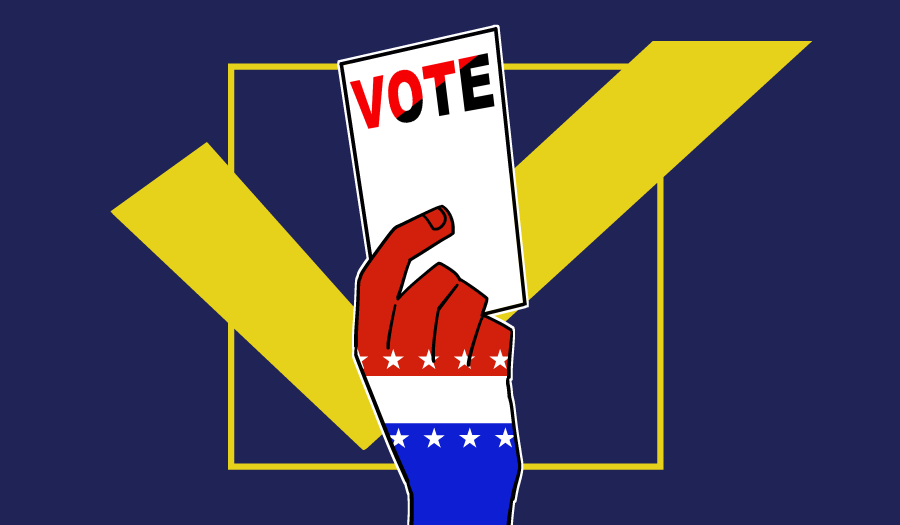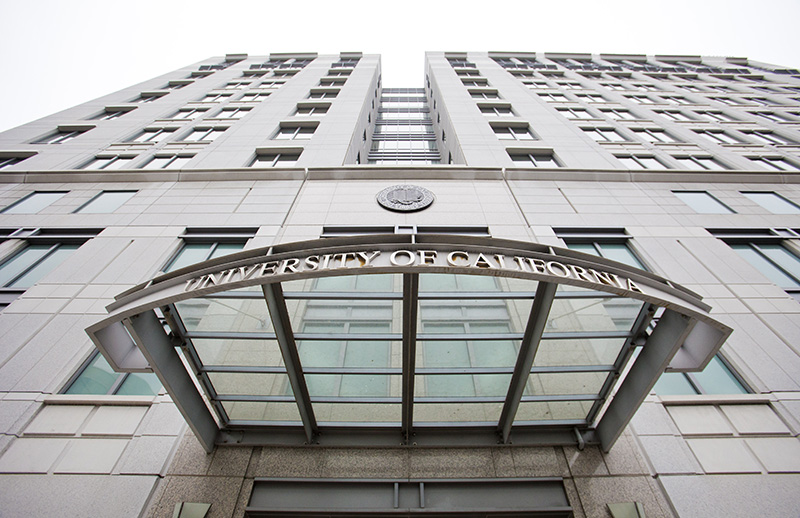This article is part of a new UCSD Guardian series on the 2020 United States elections. We will be discussing registration, state propositions and various elections from the local to federal level. Tune in every Tuesday on Facebook or Instagram to see the latest article. The propositions and measures article has been divided into two parts. This article will cover Propositions 21-25 and Measures A-E.
Proposition 21- Local Rent Control
Proposition 21 allows local governments to establish rent controls on residential properties older than 15 years that differ from state-wide rent controls. Rent control refers to government programs that limit the amount of money that a landlord can demand from a tenant for the leasing or renewing of a residential property.
Advocates for Prop 21 state that the measure would help fight homelessness and keep families in their homes. They support a limit to annual rent increases, while incentivizing the construction of new affordable housing and guaranteeing landlords a fair profit. Additionally, it hopes to protect “Mom and Pop” landlords by exempting single-family homeowners, meaning that the proposition does not apply to individuals who rent out only a second residential property or room in their house.
Those against Prop 21 assert that the proposition would only make the housing crisis in California worse.
“Prop 21 will force rentals off the market,” the campaign page states. “It has no plan to build affordable housing and 21 allows landlords to raise rents on the lowest income Californians by more than 15%, while doing nothing to prevent evictions.”
The opposition also argues that the proposition is unnecessary. Governor Gavin Newsom already signed into law establishing state-wide rent controls. Newsom argued that Proposition 21 would run the risk of reducing the availability of accessible housing in the state.
Proposition 22- Exempts App-Based Transportation and Delivery Companies from Providing Employee Benefits to Certain Drivers
Proposition 22 would classify app-based drivers, such as those working for Uber, Lyft and similar services, as independent contractors as opposed to employees. This initiative hopes to create an exemption to California Assembly Bill 5, a bill passed in 2019 that argued that most workers are to be considered employees instead of independent contractors and are thus entitled to further benefits and protections.
The proposition would block any legislation from making it illegal for app-based driving services to hire individuals on independant contracts, which supporters argue will keep app-based driving platforms available by allowing hired individuals to choose their own working hours, protect thousands of jobs created by the industry and implement more safety regulations.
The Yes campaign says that app-based drivers support Prop 21 by a 4:1 margin and that keeping app-based driving available helps lower the rates of DUIs in communities.
“Drunk driving is the number one killer on California roads,” Mothers Against Drunk Driving President and Proposition 22 supporter Hellen Witty said in a press release “We know that access to ridesharing helps reduce drunk and drug-impaired driving, keeping our roads and communities safe. Simply put: Voting Yes on Prop 22 will save lives.”
Those against the initiative are concerned that app-based drivers would not be able to access crucial employee benefits, such as health care and paid sick leave, as independent contractors. The opposition website claims that app-based driving companies have been using the status of independent contractors to “unfairly” exempt themselves from offering these benefits.
“App companies built a billion-dollar empire on the backs of drivers, while refusing
to provide them with the basic protections and benefits they are owed,” the site states. “These drivers – 78% from communities of color, and 70% working more than 30 hours a week – are essential, helping California through the global pandemic. The billion-dollar companies don’t want to pay, so they’re buying themselves a special exemption in the law to avoid ever having to pay their fair share to keep drivers safe on the job.”
Proposition 23- Dialysis Clinic Requirements Initiative
Proposition 23 would impose three requirements to the process of treating dialysis patients: requiring that doctors be in the room when dialysis takes place, prohibiting clinics from turning away patients based on their health coverage and forbidding the reduction of clinic services without state approval beforehand.
Today, roughly 80,000 Californians rely on dialysis treatment for kidney failure.
The campaign website for Prop 23 outlines concerns about accountability and hygiene in the dialysis process, citing issues with rushed workers who take shortcuts and safety concerns that go ignored. The advocates emphasize that this can cause serious health repercussions to dialysis patients and that requiring an on-site doctor could prevent these issues from persisting.
The No campaign raises concerns that Proposition 23 will cause a doctor shortage and increase taxpayer healthcare costs. They argue that the cost of dialysis would increase by $320 million annually, which could put clinics at risk of closure and reduce access for patients.
“The federal and state governments already extensively regulate dialysis clinics,” the campaign writes. “According to the Federal Centers for Medicare & Medicaid Services, California dialysis clinics outperform other states in clinical quality and patient satisfaction.”
Proposition 24- Privacy Rights and Enforcement Act Initiative
Proposition 24 would change privacy laws by allowing consumers to prohibit companies from sharing personal information, limiting the use of sensitive personal information and correcting inaccurate information. The enforcement of privacy laws would be conducted by a new state agency.
Supporters of the proposition claim that businesses continually abuse the privacy of consumers, often without notice, and that more enforcement is needed to stop the unfair sharing and use of personal data.
“The world’s largest corporations are buying and selling your most personal information, often without your knowledge or permission,” Californians for Consumer Privacy said in a statement. “They track every place you’ve ever visited, every private online search you’ve ever made, and even collect private health information about you and your family. They also sell that information to third parties who make decisions about your credit score, your insurance choices and more. Many of these companies are trying to undermine the basic rights afforded by the California Consumer Privacy Act, and we need a real enforcement arm to protect our rights.”
The opposition campaign is concerned that the proposition would establish a “pay for privacy scheme,” by which the responsibility of privacy and safety is shifted to the consumer, and can leave consumers vulnerable based on their financial capabilities.
“Those who cannot afford to pay more for privacy may get inferior service, worse connections, slower downloads and pop-up ads,” the opposing page states. “It’s an internet version of freeway express lanes for the wealthy and traffic jams for everyone else. Pay for privacy has racially discriminatory impacts, disproportionately pricing out working people, seniors, and Black and Latino families.”
Proposition 25- Referendum to Overturn a 2018 Law That Replaced Money Bail System with A System Based on Public Safety Risk
The last state-wide proposition on the California ballot concerns itself with the cash bail system. Proposition 25 would overturn a 2018 law that banned cash bail for arrested individuals and instead looks to a system of computer-generated assessed risk of committing another crime.
The Yes campaign argues that the current system favors the wealthy who can afford to pay their way out of jail time while awaiting trial. It cites that the proposition would save taxpayer money by reducing spending on holding inmates, creating safer communities by only allowing those who are considered safe to receive bail and creates a system that “doesn’t base freedom on the ability to pay.”
Those against the referendum cite three major problems with its contents
- The proposition would harm minorities the most because the “assessed risk” would be computer generated, using algorithms found to be biased against minorities.
- The proposition would put safety at risk by overburdening police officers and risking individuals on parole not attending their court sessions.
- It would cost taxpayers as more trials would arise that would argue against the algorithm’s results.
Local Measures
MEASURE A: City of San Diego Affordable Housing Bond
Measure A would allow the city of San Diego to issue up to $900 million in general obligation bonds (bonds guaranteed to be paid back using all government funds available) and raise property taxes to build low-cost housing. The housing would be provided to low to extremely low income families, veterans, the elderly, the disabled, the youth, the homeless, and those recovering from mental illness or substance abuse.
The proponents of Measure A argue that it will help to address the homelessness crisis, which includes 5,000 homeless individuals in San Diego, by providing safe housing. The measure also aims to provide affordable housing to other vulnerable populations such as those who are low-income or suffer from substance abuse illnesses.
“[Measure A will] provide housing for chronically homeless where they can get supportive mental health services, drug and alcohol treatment, job training and placements,” the campaign page states.
Those against the measure are concerned about an increased tax burden up to five hundred dollars more in property taxes. They claim that this is too much of a burden to place on San Diegans, particularly since the current pandemic has left many financially challenged.
“Given that such housing costs on average more than $400,000 per unit — and that only a small percentage of the needy would actually get shelter if the measure passed — this is an extravagantly expensive and underwhelming approach to a problem that has much cheaper solutions,” The San Diego Union Tribune Editorial Board wrote.
This measure needs a two thirds majority vote to pass.
MEASURE B: San Diego Commission on Police Practices
Measure B would replace the current Community Review Board on Police Practices with a new oversight committee, the Commission on Police Practices. Its members would be appointed by the San Diego City Council and would have sweeping powers to issue subpoenas, independent legal counsel in order to investigate police officer misconduct, review complaints against police officers, and make recommendations on discipline for police officers found guilty of misconduct.
Advocates of Measure B argue that the current measures in place to review instances and complaints of police misconduct are insufficient and must be replaced by a more extensive and independent system. They argue that the current Community Review Board on Police Practices is biased because it uses investigators and legal officials associated with the San Diego Police Department to investigate police officers accused of misconduct.
The opponents of the measure argue that the measure would be expensive and unnecessary, stating that the system in place currently is effective, as written in a San Diego Union Tribune Editorial by Nancy Vaughn.
“[The Community Review Board on Police Practices] already embodies significant core elements of [the Commission on Police Practices]. New elements within CPP greatly increase expense. This may not be the right time to embark on a seemingly desirable form of civilian oversight for SDPD given the low cost of CRB, survivor of multiple budget crises,” Vaugn wrote.
This measure requires a majority vote — 50% plus one — to pass.
MEASURE C: San Diego Unified School District District-Only Elections for School Board Members
Measure C would change elections for school board members of the San Diego Unified School District. The current system allows five board members to be elected in a sub-district for a primary election, and the two board members with the most votes move on to a general election where they compete for votes within the entire district, not a sub-district. Measure C would modify this system to ensure that both the primary and general election are held within the specific sub-district that an elected board member wants to represent.
Proponents of Measure C argue that keeping elections for represented officials within a sub-district, rather than opening up the general election to the entire district, would level the playing field for local candidates and have a better probability of the communities’ chosen official to be elected as a representative.
The Editorial Board of The San Diego Union Tribune announced its support of the initiative, arguing that it would allow for greater representation on the school board.
“District-only elections are also preferable as a matter of policy,” the statement said. “They don’t just remove obstacles for candidates of color in a school district that has had only three Latino and one Asian-American trustees in its history. They are, simply put, fairer.”
The opposition argues that the measure is “deceptive,” because it would reduce the ability for voters to vote for all five district members to just one. This would cause a disparity in the elected officials who affect all San Diego schools, regardless of sub-district.
“Board members from other communities will be able decide what happens to your neighborhood school. They could move teachers, nurses and counselors in or out, or close schools – even over the objections of the board member representing your area. The present system balances community needs and larger concerns, ensuring every board member cares about all the kids in every neighborhood in San Diego Unified,” the official argument on the Measure C ballot document reads.
Additionally, the opposition wrote that the measure would harm low income families and students because of the imbalance in voting.
This measure requires a majority vote —50 percent plus one — to pass.
MEASURE D: San Diego Unified School District Procedures to Remove Members and Fill Vacancies on School Board
Currently, the San Diego Unified School District does not fall under San Diego City Charter laws that apply to local government officials, including the Mayor, City Attorney and City Councilmembers, by which they can be removed from office for a cause, fill vacancies and govern succession of their office. SDUSD board members cannot be removed from their seat unless l they resign or are recalled.
This situation already occurred in 2019, when four of the five SDUSD members publicly called for the resignation of the fifth member due to sexual assault allegations. They were unable to remove the reported board member despite the allegations because of the current system.
Proponents argue that this will hold officials in the SDUSD accountable to the same standards as city council and government officials. There is no fiscal impact associated with the measure because it calls for only an alteration of the system of accountability for the school board.
There is a lack of strong opposition for Measure D; no official arguments have been submitted to voter guides and no website has been created against the measure.
This measure requires a majority vote —50 percent plus one — to pass.
MEASURE E: Removing 30-foot Height Limit in Midway-Pacific Highway Community Plan Area in San Diego
Measure E would exempt the Midway-Pacific Highway Community Plan Area in a coastal zone from the 30-foot height limit on buildings. Buildings constructed at the Midway District in San Diego could be taller than 30 feet, if passed.
Those in favor, such as The San Diego Union Tribune, argue that Measure E would allow for a community to grow in the area, bringing in funding for government spending, creating jobs, creating affordable housing and entertainment.
“San Diego voters approved a 30-foot height limit on new construction in communities west of Interstate 5,” the San Diego Union Tribune Editorial Board wrote. “But that arbitrary rule has also governed the 1,300-plus acres in the Midway District — not remotely a coastal community — and prevented it from becoming the thriving community it should be. Supporters say it [Measure E] is a smart step toward adding a new local gem, one that calls to mind the transformation of the Naval Training Center, San Diego into Liberty Station.”
The opposition asserts that the area should not be exempt from the height limit because it would cause crowding and congestion on the highway andthe beaches and would limit parking.
“Measure E is a turning point in San Diego history,” a Times of San Diego eEditorial stated. Past generations recoiled at the thought of becoming like Los Angeles. Every effort was made to preserve a low-lying, accessible coast that welcomed everyone. We were known as the people’s beach city. Yet bit by bit, public coastal land has been lost to private development from the Bayfront Hilton up through the Naval Training Center and beyond.. Passage of Measure E will exacerbate these bad planning decisions.”
This measure requires a majority vote —50 percent plus one — to pass.
For more information on Propositions 14-20, please visit this article.
Artwork courtesy of Yui Kita for The UCSD Guardian.







